- Home
- Graham Hancock
The Master Game Page 21
The Master Game Read online
Page 21
Soon after Marmande, their 40 days of crusading up, their sins forgiven and their indulgences earned, Prince Louis and his French soldiers went home. Amaury de Montfort and his much diminished army were left to continue the campaign but it soon became obvious that they were not capable of winning it alone. Part of the problem was generalship: although a competent soldier, Amaury was a man of greatly inferior calibre to his warrior father. But equally important was a renewed spirit of national resistance in Occitania, where the people and nobles now began a determined fightback against the occupying forces. Under the leadership of the Count of Toulouse, huge territories were recaptured and by the time of his death in August 1222 the war of liberation seemed unstoppable. The advances continued under his son and in January 1224 the young Count of Toulouse and the Count of Foix – the other main leader of the Occitanian resistance – signed a peace treaty with Amaury de Montfort that secured the withdrawal of the bulk of crusading forces.19
But doom still overshadowed Occitania and its citizens of all religious persuasions who had protected the Cathars so bravely, and died so uncomplainingly on their behalf, through the 15 years of horror from 1209 to 1224. It is a quite remarkable fact of these dreadful wars that the Cathars never once seem to have been blamed by their non-Cathar countrymen for the catastrophe that all were now plunged in together. And it is remarkable too, although Cathar credentes did join the resistance, that there is not a single example in all the extensive records of the Albigensian Crusades of Cathar perfecti ever participating in any way in violence. Despite enormous provocation – literally to the death – they seem to have adhered with almost superhuman consistency to their principles of absolute pacifism and non-resistance .20
Nor is it that they were simply suicidal and wanted to die – something that they have frequently and quite wrongly been accused of. Despite their negative view of material life the Cathars were utterly opposed to suicide and believed that each of us, so far as possible, should live out the natural term of our soul's imprisonment. Accordingly the perfecti disguised themselves, abandoned the wearing of their characteristic black robes, went on the run, sheltered where they could in safe-houses, caves, or forests, and used any and every form of evasion short of actually fighting back. As Zoé Oldenbourg observes: It is easy to see how, to that hard-pressed society, such hunted, indomitable pacifists must have appeared as the only true fathers in religion and sources of spiritual consolation, the one genuine moral authority which men could obey.21
The Pope hires the French to finish the job
The treaty of January 1224 was the falsest of dawns. Only a month after he had signed it Amaury de Montfort divested himself of his inherited title to the vast swathe of Occitania that his father had won during his glory years. All these lands that the de Montforts had stolen from their rightful Occitanian owners were now officially handed over by Amaury to a man much better equipped to consolidate the spectacular land-grab forever – the king of France .22
Previously, under King Philip Augustus, the French monarchy had resisted direct involvement in the Albigensian Crusades – despite many strident demands from the papacy for French intervention. Although Philip had not objected to the participation of his son Louis, as well as some of his barons and lesser nobles, he had made a clear policy decision to stay out of it himself. But when the old king died on 14 July 1223, it was Louis who succeeded to the throne23 – the same Prince Louis who had ordered the despicable massacre at Marmande in 1219.
Now crowned Louis VIII, and with legal title to much of Occitania handed to him on a plate by Amaury de Montfort, he was ready for a return visit. This time what he had in mind was full-scale annexation under the disguise of a crusade. Even so he drove a hard bargain with Pope Honorius III (Innocent III’s successor) who, conveniently, had begun to urge him to mount a new crusade into Occitania from the moment he had ascended to the throne. So desperate was Honorius to smash the Cathars once and for all that he made an unprecedented agreement with Louis. In return for subduing Occitania, the crown would be rewarded to the measure of one tenth of all French Church revenues for five years .24
In the spring of 1226, almost two years after he had received the titledeeds to Occitania from Amaury de Montfort, Louis VIII set out on his bogus ‘crusade’ of annexation. So overwhelming was the force he led that he received the surrender of several great cities, including Carcassonne and Narbonne, without even having to fight. His first and last major setback occurred on 8 November 1226 when he was suddenly taken ill and died .25
But still the campaign went on. Louis had been married to Blanche of Castile, a hard-hearted and determined women with vast ambitions for their 12-year-old son (also Louis – the future ‘Saint King’ Louis IX) to whom she was now regent. On her orders the French army remained in Occitania, gradually wearing down the resistance – once again represented mainly by the Counts of Toulouse and Foix. In 1228 and 1229 the French adopted a scorched earth policy, unleashing a terror campaign on the countryside, burning farms and villages throughout Occitania, destroying crops, driving the inhabitants out as refugees. By 1229 the will of the people to resist further after years of exhausting conflict had been utterly destroyed and the counts sued for peace .26
It was a crushing peace that included a public scourging in Notre Dame Cathedral in Paris of the Count of Toulouse on 12 April 1229 .27 And although it marked the official end of the Albigensian Crusades, it robbed Occitania of its independence forever, putting a huge area of this once free land under French control – effectively as an occupied state – and leading to its full annexation into the kingdom of France within half a century.
One of the provisions of the treaty allowed the count to retain nominal title to some of his hereditary domains around Toulouse but also obliged him to go into exile for five years, this exile to start no later than June 1230. In order to reduce even further his time amongst his own subjects, and thus his potential as a focus of rebellion, he was detained in Paris as a house prisoner in the Louvre Palace for six months after signing the treaty. By the time he reached Toulouse in November 1229 he found that the city's massive defensive walls had been pulled down to ensure that it would never again become a centre of pro-Cathar and anti-French resistance.28
Pieces of silver
Despite the mass holocausts of perfecti, and increasingly focussed persecution, Catharism continued throughout the 1220s to be a vibrant religion that had an important place in the life of Occitania and that still attracted large numbers of credentes. There is evidence from the first half of the decade, when it seemed that the curse of the Crusades had been lifted, of fairly active reorganisation and restructuring of the Cathar Church. The jurisdictional boundaries of bishoprics were re-established and in 1225 the Cathars even felt confident enough to establish a new bishopric – that of Razes.29 Although many perfecti had been lost to the stake it has been calculated that several hundred, both male and female, were still active in Occitania in 1225.30 So clearly, while the Albigensian Crusades had done much damage and taken many lives, they had not yet succeeded in their primary goal of eradicating the heresy of Catharism.
Military activities had of course occupied centre stage during the Crusades, but an element of heresy hunting had followed every campaign since 1209. In July 1214, for example, at the height of Simon de Montfort's successes, we find Foulques, the hated Catholic bishop of Toulouse, appointing a certain: Brother Dominic and his companions … to extirpate heresy and eliminate vice, and promote the teachings of the Faith … as preachers in our diocese.31
This ‘Brother Dominic’ was Father Dominic de Guzmán, the Spanish monk who was to establish the famous Dominican monastic order in the Toulouse area on 11 February 1218.32 Early on in the Albigensian Crusades, when Arnaud Amalric was still papal legate, Dominic had been invested with inquisitorial powers. Until his death in 1221 he deployed these powers mercilessly and his systematic programme of persecutions and investigations in Occitania laid the groundwork that would
lead to the formal establishment of the much-feared papal Inquisition in 1233.33
The reverses suffered by the crusaders after Simon de Montfort's death in 1218 had been a set-back to the heresy hunters too. But all this changed when the French renewed the Crusades in 1226 and, under the devout guidance of Blanche of Castile, made it clear that they supported the strongest action against heretics. Soon afterwards Peter Isarn, the Cathar bishop of Carcassonne, and Gérard de la Mothe, a Cathar deacon from La Bessède, were burned at the stake.34
The peace treaty that Count Raymond VI of Toulouse went to France to sign, and endured a public scourging for on 12 April 1229, introduced draconian procedures for the hunting down of heresy.35 In the following years the gradual expansion of the use of these procedures, always backed up by ‘the secular arm’ – i.e. the French occupation forces – meant that the Church came to exercise unlimited power over the life and liberty of the people of Occitania. As a signatory to the treaty Count Raymond was even obliged to persecute heretics himself – the same heretics who he and his father had fought so hard to protect for the past 20 years. He was to order his own bailiffs to hunt them down on the much reduced lands that the treaty had left nominally under his control, and he was to assist in hunting them down on the far larger lands that had been ceded to the French crown: We will purge these lands of heretics and of the stench of heresy and we will also aid the purgation of the lands which the Lord King shall hold … In order better and more easily to unmask them [the heretics], we promise to pay two marks of silver for the next two years and, after that, one mark to every person who causes a heretic to be arrested, on condition that the heretic is condemned as such by the bishop of the place, or by a competent authority.36
As well as paying blood money to informers, Raymond was also required to pay large sums directly to the Church – 10,000 marks, supposedly to repair damage done to its property by heretics, 4,000 marks to the monasteries, and a further 4,000 marks to support 14 masters of Catholic theology at the University of Toulouse.37 The idea, comments medieval historian Martin Barber, was to fill the land ‘with bastions of orthodoxy where heretics could find no comfort or protection.’38
Informer culture
At the same time the heat was turned up on individual Cathars at all levels with a whole raft of new statutes. These 45 cold-hearted, methodical, pettifogging, bureaucratic decrees made the suppression of heresy obligatory under common law. A few examples will give us a glimpse of just how far the Church was prepared to go in invading and taking control of people's everyday lives and drawing them into inhumanities: • In every parish throughout the land the Catholic bishops were to nominate a priest and two or three trusted laypersons ‘of unblemished reputation, who shall take an oath to search out, loyally and assiduously, such heretics as may be resident in the said parish.’ The job of these state-sponsored vigilantes required them to ‘make a close inspection of all suspect houses, their chambers and cellarage, and likewise all concealed hiding places, the which to be demolished.’ They were to arrest not only heretics but also anyone who had helped heretics in any way.
• A person who had permitted a heretic to stay on his land was to confess to this crime forthwith: ‘else on conviction he will forfeit his lands in perpetuity, and be liable to personal punishment.’
• Persons whose lands were used by heretics without their knowledge or agreement were subject to the same penalties.
• ‘The house in which a heretic is discovered shall be razed to the ground, and the land on which it stands confiscated.’
• ‘If the resident bailiff of a locality suspected to be a haunt of heretics does not hunt the said heretics down zealously, he shall lose his position without compensation.’
• ‘All persons may search out heretics on their neighbours’ land.’
• Heretics who had abjured Catharism and returned to the Church were to wear ‘two crosses on their outer garment, one on the right and other on the left side, and of a different colour from the garment itself …’
• In every parish all males over 14 years of age and all females over 12 were required to swear an oath before their bishop, renewable every two years thereafter, that they would be loyal Catholics, abjure heresy, help to hunt down heretics, and inform on any heretics known to them. In the process the name of every person dwelling in every parish was to be recorded and those who failed to take the oath were to be treated as suspected heretics.
• Every person of either sex on the parish lists (again aged over 14 in the case of males and over 12 in the case of females) was to be compelled to confess to their parish priest at least three times a year and to take Communion at Christmas, Easter and Pentecost. ‘Priests are to seek out any who fail to attend Holy Communion, and who thereby incur suspicion of heretical beliefs.’
• Lay persons were forbidden to possess any of the books of the Old and New Testament ‘with the exception of the Psalter, the Breviary, and the Book of Hours of the Blessed Virgin; and it is rigorously forbidden to possess even these in the vernacular tongue.’
• ‘Any person denounced by public opinion, and whose ill reputation is known to the bishop, shall properly be called a heretic.’39
And so the statutes droned on, releasing into the free air of Occitania the horrible odour of a Nazi-style informer culture and, as Zoé Oldenbourg observes, setting up ‘a system of virtual police control over the entire population.’40 We use the word Nazi advisedly here. A decade and a half earlier, in 1215 at its Fourth Lateran Council, the Catholic Church had already anticipated the Warsaw Ghetto by more than 700 years when it compelled the Jews of Europe to stitch a prominent yellow circle onto their clothing.41 Now, following the 1229 treaty, we see the same treatment – albeit with the different symbol of the two crosses – applied to reconciled heretics. Considered a ‘symbol of shame’ the two crosses came routinely to be coloured yellow as specified in a later statute which also gave the exact dimensions of the crosses and more information on how they were to be worn. All reconciled heretics, states the relevant law: … shall carry from now on and forever two yellow crosses on all their clothes except their shirts, and one arm shall be two palms [8 inches] long while the other transversal arm shall be a palm and a half [6 inches] long, and each shall be 3 digits [2.25 inches] wide, with one to be worn in front of the chest, and the other between the shoulders.42
Required under severe and possibly fatal penalty not to ‘move about either inside or outside’ their homes without wearing the crosses, reconciled heretics were moreover obliged to ‘redo or renew the crosses if they are torn or destroyed by age.’43
The Dominican flying squad
One gets a sense of the kind of cold, calculating, minds that must have been at work behind the dreaming-up and enforcement of such regulations – regulations that were designed to sever the bonds of warmth and trust that link human beings one to another. The clear objective was to create an atmosphere of suspicion, blame and jeopardy, and to whip up a frenzy of denouncements by capitalising on people's fears of loss of property – and far worse.
The following years saw many heretics seized and killed. On one occasion, for example, shortly after he had taken office as bishop of Toulouse in 1231, Raymond de Fauga was able to gloat over the mass-burning of 19 high-ranking Cathar perfecti who had been betrayed, ambushed and captured at one of their meetings.44 De Fauga was a Dominican, the monastic order established by the late Saint Dominic with the explicit purpose of attacking heresy. Since 1215 these austere and zealous monks had occupied three houses near Toulouse's Narbonne Gate. In 1230, in recognition of their growing importance, they moved to a new site beside the Saracen Wall.45 By 1234 there were more than 40 of them in Toulouse alone and they had established missions in many other parts of Europe as well.46
Tremendous recognition, prestige and power had begun to come their way when Pope Gregory IX had succeeded Honorius III in 1227. Gregory was unhappy with the system so far established in Europe for the suppre
ssion of heresy. Though primarily under the control of the bishops, other figures with overlapping responsibilities were also frequently involved. The result was chaos and inefficiency at a time when attention was beginning to be focussed on the supposed ‘danger’ posed by Cathar communities in Germany, France and northern Italy, as well as the continuing survival of Catharism in Occitania. With the linked Bogomil heresy still looking very strong further East, the paranoid tendencies of the Catholic Church went into overdrive and there was a widespread conviction that enemies were hiding themselves everywhere.
The benefit in this for the Dominicans was that in 1231 Pope Gregory appointed them as his own personal ‘flying inquisition’, superior to the bishops and independent of them, to discover, arrest, interrogate and condemn German Cathars. In 1233, seeing the success of their work in Germany, Gregory also asked them to do the same job in France and in Occitania .47 Success bred success, triumph followed triumph, and soon the Dominicans, aided to some extent by Franciscans and local prelates, had been appointed as the official papal Inquisition, overriding all other authorities in any matter concerning heresy.48
The term ‘inquisition’ had long been used for the process of extracting confessions from heretics, and ‘inquisitions’ – interrogations and mass trials of suspected heretics – were periodically held by the bishops. But this was the first time in the history of the Church that officials had been appointed whose only function was to conduct inquisitions, who were officially titled ‘inquisitors’, and who were responsible directly and exclusively to the pope.49

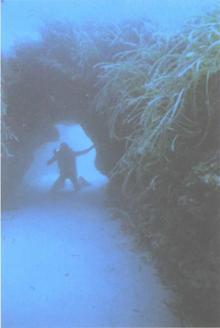 Underworld: The Mysterious Origins of Civilization
Underworld: The Mysterious Origins of Civilization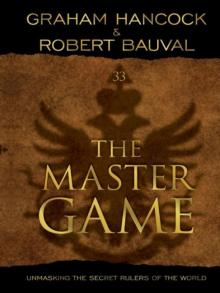 The Master Game: Unmasking the Secret Rulers of the World
The Master Game: Unmasking the Secret Rulers of the World America Before
America Before Entangled
Entangled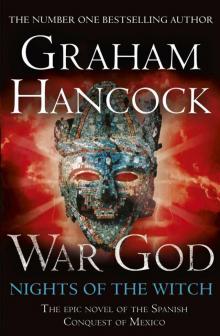 War God: Nights of the Witch
War God: Nights of the Witch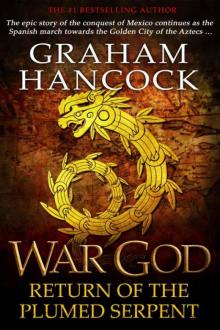 War God: Return of the Plumed Serpent
War God: Return of the Plumed Serpent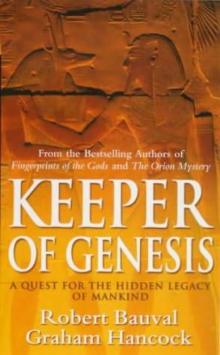 The Message of the Sphinx AKA Keeper of Genesis
The Message of the Sphinx AKA Keeper of Genesis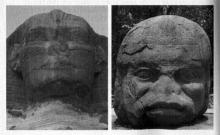 Fingerprints of the Gods
Fingerprints of the Gods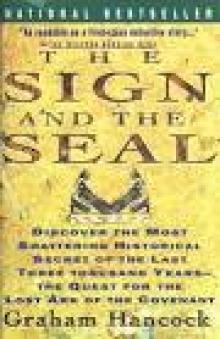 The Sign and the Seal
The Sign and the Seal The Mars Mystery: The Secret Connection Between Earth and the Red Planet
The Mars Mystery: The Secret Connection Between Earth and the Red Planet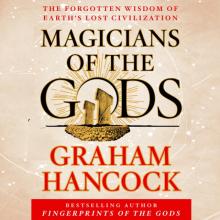 Magicians of the Gods: The Forgotten Wisdom of Earth's Lost Civilization
Magicians of the Gods: The Forgotten Wisdom of Earth's Lost Civilization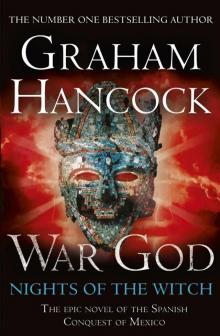 War God
War God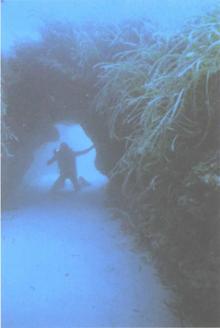 Underworld
Underworld The Mars Mystery
The Mars Mystery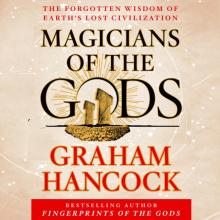 Magicians of the Gods
Magicians of the Gods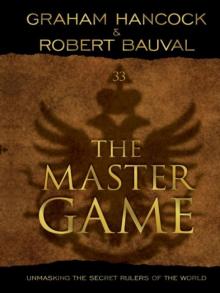 The Master Game
The Master Game